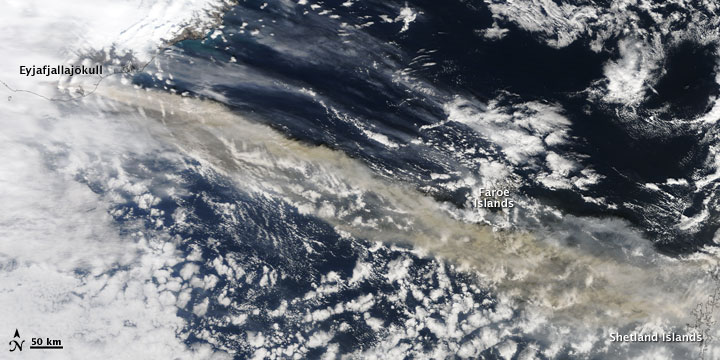
As we reported last month for The California Report and on the Climate Watch Blog, the subject of geoengineering, or deliberate climate intervention, is becoming an increasingly hot topic; ideas such as brightening clouds to reflect sunlight away from the Earth or shooting aerosol particles into the stratosphere to block it. They’re just two of the science-fiction-sounding ideas garnering interest from the scientific community and the public as prospects dim for CO2 mitigation efforts across the world.
This morning on KQED’s Forum program, host Dave Iverson was joined by Ken Caldeira, climate scientist at the Carnegie Institution’s Department of Global Ecology at Stanford University, and Martin Bunzl, professor of philosophy at Rutgers University and director of the Rutgers Initiative on Climate and Social Policy.
At the outset, Caldeira explained the distinction between two basic kinds of intervention: one bucket of strategies that focus on removing carbon from the atmosphere, which tend to be expensive, but less controversial, and a second bucket of strategies that are being designed to reflect or block sunlight to cool temperatures, irrespective of CO2 levels.
This second bucket is where the bulk of the controversy lies for various reasons, including environmental and political concerns, as well as a fear by some that the more attention geoengineering gets, the less likely people will be to do the critical work required to reduce greenhouse gas emissions.
“The only real way to solve our climate problem is to reduce greenhouse gas emissions,” said Calderia. “But I’m concerned that we’re not doing that, and I’m thinking, what will we do in the event of an emergency?””
Because climate modeling is not yet sophisticated enough to capture the regional and local effects of geoengineering strategies, and because with current technology, it would likely be impossible to limit the effects to a specific area of the planet, both Caldeira and Bunzl expressed the need for caution when considering deployment. Caldeira said that more research needs to be done on potential environmental impacts of geoengineering, something Bunzl said might be premature. Bunzl advocated that research be focused on improving computer modeling before taking any experiments into the field.
“I’m concerned about the limitations of our climate models in predicting regional effects, and especially regional effects due to precipitation. Until and unless those climate models become a lot better with their fine-grained prediction, its a crapshoot,” said Bunzl.
One concern Climate Watch readers and listeners have raised about using sulfur aerosol for solar radiation management is acid rain. Caldeira said that this strategy could produce a “small acid rain problem,” but that it would not be consequential given the relatively small amount of particles that would be used (a few percent, compared with what we’re already emitting in other ways). In a separate interview last month, Rutgers geoengineering expert Alan Robock dismissed the acid rain concern by saying that the amount of sulfur that would be used in geoengineering strategies would be close to negligible, compared with the sulfur already spewing into the atmosphere from coal plants. In fact, Robock said he recently removed acid rain from his list of “20 reasons why geoengineering may be a bad idea” list.
Two new books on the subject will appear on shelves this month: How to Cool the Planet by Jeff Goodell, and Hack the Planet by Eli Kintisch. Both books are reviewed by Mason Inman at Nature Reports Climate Change this week and on Thursday, Goodell discussed his book on NPR’s Fresh Air. Kintisch has also developed the Earth Emergency Procedures Safety Card which is a clever, quick introduction to the why’s and how’s of geoengineering, available either as a physical card or an online flash interactive animation.
After the Forum broadcast, I asked Caldeira about the volcano erupting in Iceland that is currently grounding flights across Europe. Could Eyjafjallajokull be another Mt. Pinatubo? (The massive 1991 eruption of Mt. Pinatubo in The Philippines sent so much ash into the stratosphere, that it was responsible for cooling the Earth’s atmosphere 1/2 degree Celsius.) Not likely, said Caldeira. While the Icelandic volcano is wreaking havoc on air travel, he said, the eruption is too small to disrupt global climate. The only effects Californians might see, he said, are “better sunsets.”
